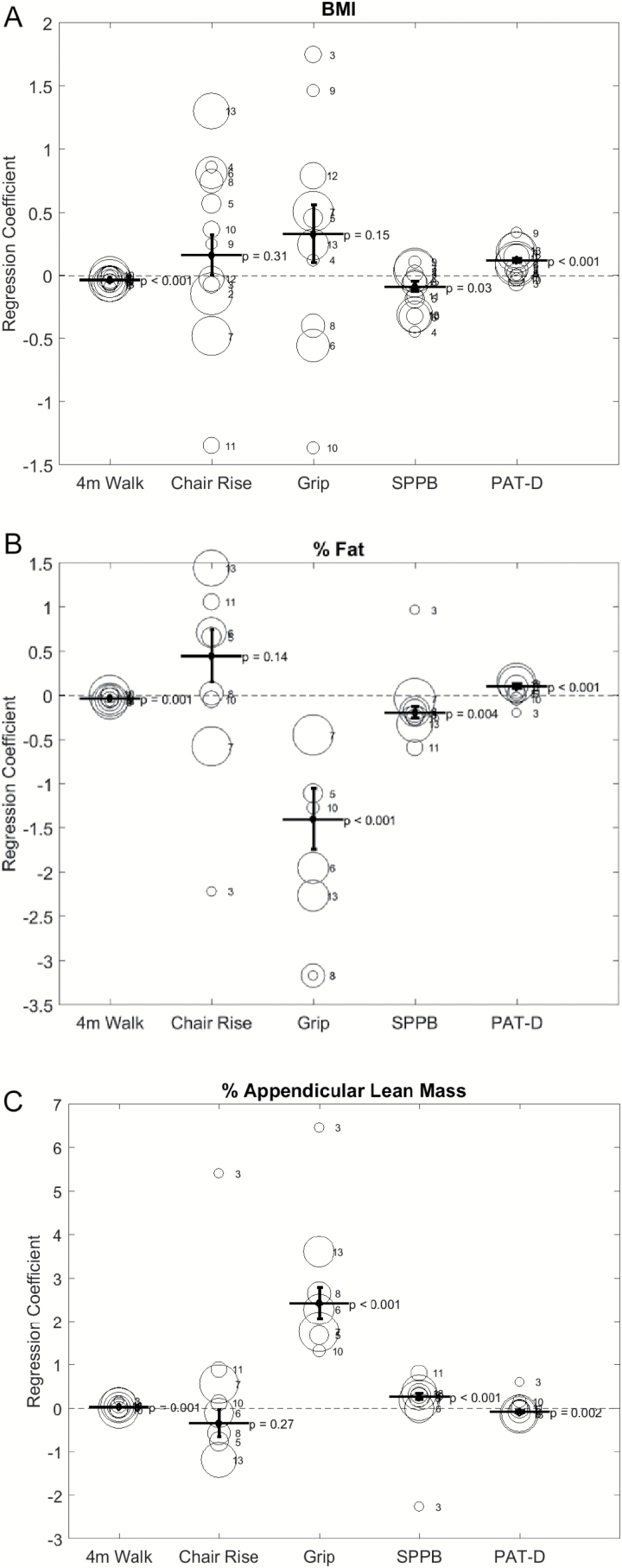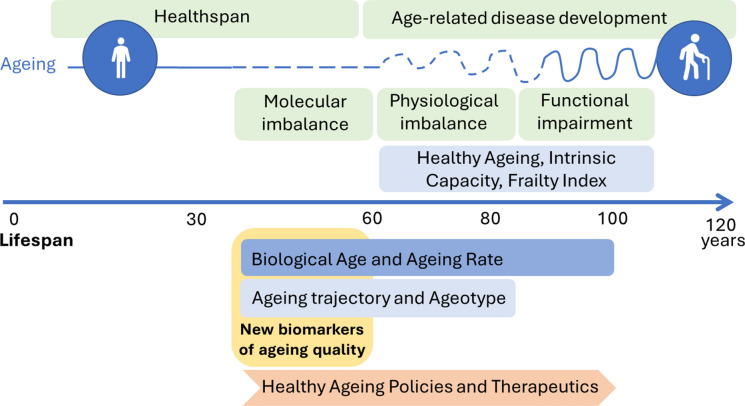Discover Pandipedia
Pandipedia is the world's first encyclopaedia of machine generated content approved by humans. You can contribute by simply searching and clicking/tapping on "Add To Pandipedia" in the answer you like. Learn More
Expand the world's knowledge as you search and help others. Go you!
Introduction
Understanding body composition is essential for assessing health in aging populations, especially when evaluating changes in muscle mass, fat distribution, and bone density. In clinical and community settings, two primary tools are widely used: Dual-Energy X-ray Absorptiometry (DEXA) and Bioelectrical Impedance Analysis (BIA). DEXA is recognized as a gold standard for its precision and comprehensive analysis, while BIA offers a more accessible, cost-effective alternative despite its limitations. This report synthesizes key passages from various sources to compare accuracy, cost, radiation exposure, and accessibility for making informed decisions in clinical practice and for consumers[4][7].
Accuracy Comparison
DEXA scans use two low-dose X-ray beams to directly measure bone mineral density, fat mass, and lean mass, offering highly accurate data that is largely unaffected by external factors such as hydration, recent food intake, or skin temperature[4]. In contrast, BIA devices estimate body composition by measuring the resistance to an electrical current, but their accuracy can vary significantly due to factors like hydration status, electrode placement, and population-specific variables[1]. Studies have shown that while certain advanced BIA devices can correlate well with DEXA for measures such as fat mass in specific populations, the overall concordance—especially for parameters like fat-free mass—remains moderate[2]. Additionally, some investigations in particular groups (e.g., Hispanic diabetics) reveal that BIA may overestimate or underestimate body composition measures when compared to DEXA, suggesting that DEXA remains the preferred method for precise body composition analysis in aging individuals[3].
Cost Considerations
Cost is a prominent factor when choosing between DEXA and BIA. BIA devices are significantly less expensive, portable, and easier to operate, making them a popular choice in community health settings and for repeated monitoring over time[7]. On the other hand, DEXA requires specialized equipment that is usually located in hospital or specialized imaging centers, which results in higher costs for both the facility and the patient. However, despite the increased cost, DEXA provides a level of detail and accuracy that is critical for diagnosing conditions like osteoporosis and for tailoring individualized health interventions based on precise body composition data[4].
Radiation Exposure
Radiation exposure is a common concern, especially when monitoring disease progression or evaluating changes in body composition over time. DEXA scans involve low-dose ionizing radiation, typically less than 10 microSieverts, which falls within safe limits for diagnostic procedures and is justified by the clinical benefits provided by the detailed measurements[5]. In contrast, BIA methods do not involve any radiation risk, which is an advantage for repeated measurements; however, the trade-off remains the lower accuracy and sensitivity to internal and external variations in parameters such as hydration[1].
Accessibility and Practical Considerations

When considering accessibility and practical usage, BIA devices have the advantage of portability and ease of use. They can be easily employed in a range of settings—from clinics to gyms and community centers—making them a valuable tool for routine screening and monitoring in aging populations[1]. DEXA, while more accurate, is typically confined to specialized imaging centers due to the need for dedicated machinery and trained technicians. For clinicians who require in-depth analysis of body composition, including regional distribution of fat (such as visceral fat) and measurements for bone density, DEXA provides detailed insights that are critical for diagnosing conditions and planning personalized interventions[4]. Thus, while BIA is beneficial for its accessibility and lower cost, its results may be influenced by factors like hydration and electrode placement, making it less ideal for clinical decisions that require high precision[7].
Decision Flowchart for Clinicians and Consumers
To assist clinicians and consumers in choosing the appropriate method for body composition assessment in aging populations, the following decision flowchart is provided:
-
Define the clinical or personal objectives:
- If the purpose is to obtain detailed and precise measurements including bone density, visceral fat, and muscle mass distribution, proceed with DEXA.[4].
- If the goal is a quick screening or routine monitoring with limited resources, BIA is an acceptable alternative, keeping in mind its sensitivity to changes in hydration and environmental factors[7]. -
Evaluate cost and resource availability:
- Consider DEXA when the budget allows for more expensive, specialized testing, especially when precise longitudinal data is needed.
- Opt for BIA in settings with lower financial constraints or where rapid, repeated measurements are required[1]. -
Consider radiation exposure:
- DEXA uses low-dose radiation, which is generally safe and justified for the detailed assessment it offers; however, for patients requiring very frequent assessments or for vulnerable groups, this factor should be considered[5].
- BIA does not involve radiation and is therefore preferable when radiation avoidance is a priority. -
Assess accessibility and operational needs:
- If the patient or facility can access specialized imaging centers, DEXA is recommended.
- When portability and ease of use are paramount, such as in primary care or remote settings, BIA is more practical.
This flowchart guides decision-making by clearly balancing the trade-offs between accuracy, cost, radiation, and accessibility, ensuring that clinicians and consumers select the method best suited to their specific needs.
Conclusion
In summary, DEXA and BIA each have distinct advantages and limitations for assessing body composition in aging populations. DEXA offers unparalleled accuracy by directly measuring fat, muscle, and bone density through low-dose X-rays and is indispensable for detailed clinical assessments and for conditions such as osteoporosis. However, its higher cost and limited accessibility may restrict its widespread use in routine screening. Conversely, BIA provides an affordable, portable, and radiation-free alternative that is well-suited for community-based monitoring, although its accuracy can be affected by methodological variables such as hydration and electrode positioning. Ultimately, the choice between these tools should be guided by the specific clinical or consumer needs, resource availability, and the required precision of the measurements. This integrated analysis supports informed decision-making by balancing high-precision requirements with practical considerations tailored for aging populations[8].
Let's look at alternatives:
- Modify the query.
- Start a new thread.
- Remove sources (if manually added).
Transcript
Fact‐checking plays an important role in challenging false claims, but it is not enough on its own. When corrections are issued after misinformation has already spread on fast moving social media, they often fail to overcome the deep influence of false narratives. This happens because many people remain swayed by misleading ideas due to natural cognitive biases and strong emotional reactions that make post‐hoc corrections less effective. That is why a layered approach is needed. Combining fact‐checking with proactive measures such as media literacy training, interactive educational programs that teach how to verify sources, and pre‐emptive messages designed to build resistance against manipulation creates a more robust defense against misinformation. In addition, while automated fact‐checking tools can help monitor and flag false claims, human judgment is still essential to understand context and nuance. Together, these layered solutions work to build a healthier information ecosystem and empower citizens to make truly informed decisions.
Let's look at alternatives:
- Modify the query.
- Start a new thread.
- Remove sources (if manually added).
Get more accurate answers with Super Pandi, upload files, personalised discovery feed, save searches and contribute to the PandiPedia.
Let's look at alternatives:
- Modify the query.
- Start a new thread.
- Remove sources (if manually added).
Let's look at alternatives:
- Modify the query.
- Start a new thread.
- Remove sources (if manually added).
Starlink's typical latencies are about 20-50 ms.
Geostationary satellites produce round-trip latencies of roughly 600-650 ms.
Customers in Nigeria experience the highest average latency with LEO satellites.
Starlink's median latency averaged 41 ms in the UK.
O3b constellation satellites, in medium Earth orbit, have about 125 ms latency.
Let's look at alternatives:
- Modify the query.
- Start a new thread.
- Remove sources (if manually added).
Let's look at alternatives:
- Modify the query.
- Start a new thread.
- Remove sources (if manually added).
Get more accurate answers with Super Pandi, upload files, personalised discovery feed, save searches and contribute to the PandiPedia.

If you focus on the difference you can make for the business you're working in, people will see the value.
Judy Chou[3]
We need to diversify beyond the whole orchestra. It's more about your instrument, and how you present it.
Judy Chou[3]

We built Sano with the goal of completely changing the field.
Charlotte Guzzo[2]
Women in biotech can make an impact that hasn't been heard.
Judy Chou[3]
There are always a million obstacles. Always keep a few people around to help validate your belief system.
Paula Ragan[3]
Let's look at alternatives:
- Modify the query.
- Start a new thread.
- Remove sources (if manually added).

The reproduction of harmful ideas is particularly dangerous now that AI is being tested at scale on millions of people.
Kate Crawford
Algorithmic biases are not only technical failures but often reflect systemic inequities embedded in historical and societal data.
Unknown

If left unchecked, biased algorithms can lead to decisions with disparate impact on certain groups, even without programmer’s intent to discriminate.
Nicol Turner Lee, Paul Resnick…
Fairness is a human, not a mathematical, determination, grounded in shared ethical beliefs.
Unknown
The reliance on AI may create a false sense of objectivity and fairness.
Röösli, Rice, and Hernandez-Bo…
Let's look at alternatives:
- Modify the query.
- Start a new thread.
- Remove sources (if manually added).
Introduction and Preparation

Begin your digital declutter challenge by assessing your current digital landscape and deciding which areas cause the most clutter. Make a list of your email accounts, device storage contents (files, downloads, apps), photo libraries, and social media feeds to identify where you need to start. Establish clear goals such as reducing screen time, organizing digital files, and removing non-essential notifications. As one guide explains, digital decluttering involves sorting through emails, photos, apps, and even social media content to remove what you no longer need[7].
Week 1: Declutter Your Inbox and Communication Channels
The first week focuses on your email and communication channels. Start by taking stock of your inbox: delete unnecessary emails, unsubscribe from newsletters that no longer add value, and create folders for important correspondence. For example, a four‐week challenge guide recommends beginning your decluttering by organizing your inbox and establishing clear folder systems[1]. In addition, review your contacts and remove outdated entries, and begin checking your notes application to delete redundant notes or merge similar entries. Integrating daily bite-sized tasks from a 30-day digital declutter plan can make this process less overwhelming and help you build habits that target communication clutter[2].
Week 2: Device Management and File Organization
During the second week, shift your focus to clearing clutter from your devices. Begin by cleaning up your digital workspace on computers and mobile devices. Remove unused apps, organize bookmarks into folders (for example, using workspace management tools), and delete excess downloads and unnecessary files. A detailed checklist suggests taking note of your frequently used bookmarks and deleting those that are no longer needed, as well as periodically wiping your desktop and digital downloads folder[1] Meanwhile, use the advice from a digital declutter checklist to review your browser extensions and calendar clutter, ensuring that only what is necessary remains active[6]. This step establishes a foundation for better performance, organization, and reduced non-essential screen use.
Week 3: Photo, Social Media, and App Declutter

Week three targets photos, social media, and the apps on your devices. Start by sorting through your photo libraries: delete duplicates, blurry images, and organize the rest into clearly labeled albums. As some guides recommend, creating albums by event or subject can help save storage space and reduce the time spent searching for images[1]. In parallel, re-examine your social media feeds and the accounts you follow. Remove those that no longer resonate with your current interests and use tools such as Instagram's reset features or the options to mark content as 'Not Interested'[5]. Finally, delete unused apps or reorganize them into specific folders on your mobile phone, which not only declutters your home screen but also helps reduce temptations to spend excessive time on some applications[7].
Week 4: Desktop Optimization and Establishing Maintenance Habits
The final week of the challenge is about perfecting your desktop and creating lasting habits. Begin by cleaning up your computer's desktop—delete unneeded files, organize remaining ones into categorized folders, and update your background for a fresh visual appeal. This step also involves systematically clearing out caches and cookies from your browsers to enhance performance[1]. In addition, set up scheduled reminders (for instance, every three months) to revisit and clean your digital spaces gradually, thus maintaining your newfound organization. As part of establishing long-term habits, consider planning for digital detox periods, using strategies such as setting internet downtimes or designating screen-free zones in your home to encourage breaks from devices[4].
Troubleshooting and Post-Challenge Maintenance
During and after the challenge, expect some hurdles like feeling overwhelmed when facing large amounts of clutter or accidental deletions. When such issues arise, break the tasks into even smaller, daily sessions and use checklists to track your progress. Many guides suggest that if you have thousands of items (like hundreds or thousands of emails or photos), work in batches and assign specific days to different tasks to avoid burnout[2]. After completing the month-long challenge, integrate routine maintenance measures such as monthly decluttering sessions and quarterly system checks to ensure your digital environment remains organized. Also, consider using tool apps to track screen time and set digital boundaries, as these can help reinforce the habits you've built during the challenge[4].
Let's look at alternatives:
- Modify the query.
- Start a new thread.
- Remove sources (if manually added).
Quantum sensors enhance gravitational mapping, revealing hidden underground structures.
Medical imaging benefits from quantum magnetometers, offering better diagnostic capabilities.
Quantum sensors can detect underground resources like oil and natural gas with high accuracy.
Quantum accelerometers enable precise navigation in GPS-denied environments.
Atomic clocks provide unparalleled time accuracy for GPS systems.
Let's look at alternatives:
- Modify the query.
- Start a new thread.
- Remove sources (if manually added).












